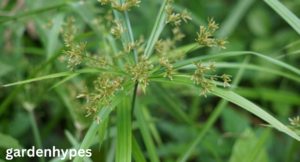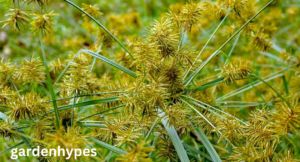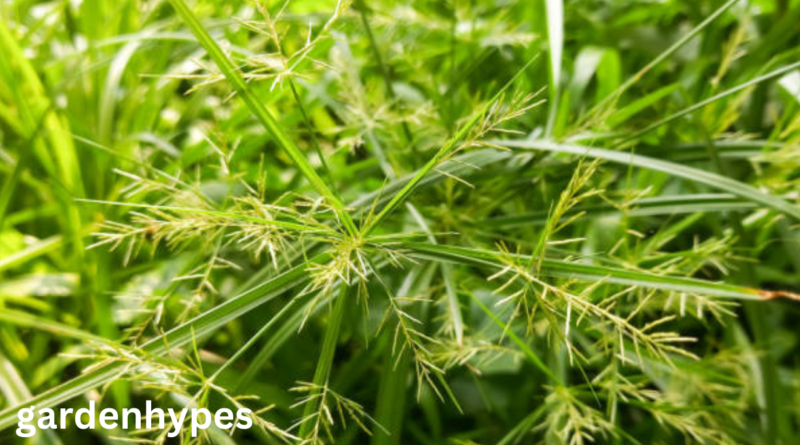Nutsedge Grass Identification Control and Prevention for a Healthier Lawn
Introduction to Nutsedge Grass
If you’ve ever noticed strange grass-like plants shooting up in your lawn, growing faster and taller than everything else, chances are you’ve encountered nutsedge. At first glance, it might look like an extra-tough grass variety, but it’s not Nutsedge grass at all—it’s actually a sedge, which belongs to a completely different plant family. This little detail makes a huge difference in how it behaves and why it’s such a nuisance.
click in link Fern-like Weeds
Unlike regular grass, nutsedge thrives in warm, moist conditions. It grows aggressively, sometimes outpacing even the healthiest turf. The real problem? Once it settles in, it doesn’t just stop at taking over small patches—it spreads underground through nut-like tubers (hence the name “nutsedge”). These tubers can survive harsh conditions, making it extremely resilient to regular lawn care practices like mowing or watering.
Homeowners often get frustrated because normal weed-control methods rarely work. Pulling it up by hand may seem effective, but unless you remove every single tuber hidden beneath the soil, it will pop right back up in a matter of weeks. Traditional herbicides often fail, too, because nutsedge isn’t classified the same way as broadleaf weeds or grasses.
The tricky nature of nutsedge is why it’s one of the most complained-about weeds among homeowners and gardeners. Understanding what it is and how it behaves is the first step toward controlling it. Once you learn how to spot it early and apply the right treatment methods, you’ll stand a much better chance of reclaiming your lawn.
So, before we dive into control strategies, let’s break down the types of nutsedge and how to identify them properly. Knowing your enemy is the first rule of any battle—especially when the opponent is as stubborn as nutsedge.
Types of Nutsedge Grass
Not all nutsedge plants are the same. The two most common types found in lawns are yellow nutsedge (Cyperus esculentus) and purple nutsedge (Cyperus rotundus). While they look similar to the untrained eye, there are key differences that matter when it comes to identification and treatment.
Yellow Nutsedge
This variety is the more common of the two. It features bright yellow-green foliage that stands out against darker lawn grasses. The stems are triangular in shape—a unique characteristic of sedges. The seed heads are yellowish to golden brown and often appear in midsummer. Yellow nutsedge thrives in moist, poorly drained soils, making it common in low-lying lawn areas or near irrigation systems.
Purple Nutsedge
Purple nutsedge is considered the more aggressive variety. Its foliage is darker green compared to yellow nutsedge, and its seed heads are reddish to purple in color. While yellow nutsedge tubers grow in chains, purple nutsedge tubers grow in clusters, which makes it much more difficult to eradicate. Once established, purple nutsedge can quickly spread through underground rhizomes and dominate large sections of a lawn.
Key Differences Between the Two
- Color: Yellow nutsedge has lighter green leaves; purple nutsedge is darker.
- Seed Heads: Yellow produces golden brown clusters; purple produces reddish-purple ones.
- Tubers: Yellow tubers grow in single chains; purple tubers form dense mats.
- Aggressiveness: Purple nutsedge is generally harder to control due to its dense underground system.
By recognizing which type you’re dealing with, you can better plan your control strategy. Both are invasive, but purple nutsedge will test your patience more because it spreads relentlessly and often requires repeated treatments.
How to Identify Nutsedge in Your Lawn
Many homeowners mistake nutsedge for tall grass or even crabgrass, which leads to wasted time and ineffective treatments. That’s why being able to identify it correctly is critical.
click in link Fern-like Weeds

Here’s how to tell nutsedge apart:
- Leaf Shape and Texture – Nutsedge leaves are V-shaped and waxy compared to typical grass blades. They also tend to grow in sets of three from the stem, while grasses usually grow in pairs.
- Stem Shape – This is the easiest way to confirm nutsedge. Cut the stem and look at it crosswise—you’ll see a triangle shape. Grass stems, on the other hand, are round or flat.
- Growth Pattern – Nutsedge grows faster than lawn grasses, meaning it will stick out a few inches above the rest of your turf within just a few days of mowing. It creates patches that seem to “pop up” overnight.
- Seed Heads – If left unmowed, nutsedge produces seed heads in mid to late summer. Yellow nutsedge produces golden clusters, while purple nutsedge creates reddish-purple ones.
A common mistake is assuming nutsedge is crabgrass. While crabgrass spreads across the ground and looks flat, nutsedge grows upright and vertical, making it much easier to spot once you know what to look for.
The best time to identify nutsedge is during the hot summer months. This is when it thrives the most, outgrowing surrounding grass. If you notice bright green patches standing taller than your lawn, chances are you’ve got nutsedge.
Why Nutsedge Is a Problem in Lawns and Gardens
Some weeds are just annoyances, but nutsedge is a serious invader. The reason it’s so problematic lies in how aggressively it spreads and how hard it is to kill.
Unlike most weeds, nutsedge doesn’t rely solely on seeds. Instead, it forms underground nut-like tubers that act as storage organs. These tubers can stay dormant in the soil for years and then suddenly sprout when conditions are favorable. Even if you pull the visible plant, the underground tubers will regenerate new shoots, making hand-pulling ineffective unless you dig deep enough to remove everything.
This persistence makes nutsedge a nightmare in lawns. It grows faster than turfgrass, so within a week of mowing, you’ll see it standing above the rest of your lawn like it owns the place. Not only does this ruin the uniform look of your yard, but nutsedge also steals water, sunlight, and nutrients from your grass, leaving your lawn weaker.
In gardens, nutsedge is equally destructive. It invades vegetable beds, choking out crops and competing for nutrients. Because its underground system spreads so quickly, it can overwhelm delicate plants and reduce harvest yields. Farmers worldwide consider purple nutsedge one of the worst weeds in agriculture due to its ability to take over entire fields.
The bottom line: nutsedge is not just another weed. It’s invasive, persistent, and highly competitive. Ignoring it won’t make it go away—in fact, the longer it’s left untreated, the more it will spread underground.
Life Cycle of Nutsedge Grass
Understanding the life cycle of nutsedge is key to controlling it. Unlike ordinary weeds, which often die off after one growing season, nutsedge is a perennial weed. That means it comes back year after year if not completely eradicated.
Stage 1: Sprouting from Tubers
Nutsedge begins its growth from underground tubers, sometimes called “nutlets.” These tubers can survive extreme weather conditions, including freezing winters and scorching summers. When spring arrives, they send up new shoots that quickly outgrow surrounding grasses.
Stage 2: Rapid Summer Growth
During warm months, nutsedge grows aggressively, producing leaves and spreading through rhizomes. Each plant has the potential to create dozens of new tubers, which will become next year’s weeds if not controlled.
Stage 3: Seed Head Production
By mid to late summer, nutsedge produces seed heads. While the seeds are not the primary way it spreads, they do add to the invasion if allowed to disperse.
Stage 4: Dormancy and Regeneration
In late fall, the visible plant may die back, but the underground tubers remain alive and ready for the next growing season. This is why homeowners are often surprised to see nutsedge reappearing even after they thought it was gone.

Because of this life cycle, control must target not only the visible plant but also the hidden tubers underground. Herbicides that only burn down leaves won’t solve the problem. Proper control strategies must be timed to attack when the plant is actively storing energy in its tubers.
click in link Fern-like Weeds
faqs
1. What is the fastest way to get rid of nutsedge grass?
The fastest way to get rid of nutsedge is by using a selective herbicide designed specifically for sedges, such as products containing halosulfuron or sulfentrazone. Pulling by hand may work for small patches, but it often fails because the underground tubers remain and regrow. For best results, apply herbicides during the active growing season when the plant is storing energy in its tubers, usually in midsummer.
2. Why does nutsedge keep coming back after I pull it out?
Nutsedge keeps coming back because of its underground tubers (nutlets). Even if you remove the visible plant, tiny tubers beneath the soil can regenerate new growth. In fact, a single plant can produce hundreds of tubers, each capable of sprouting for several years. That’s why digging or pulling alone rarely works unless you remove every last tuber, which is extremely difficult.
3. Is nutsedge harmful to pets or people?
Nutsedge itself is not toxic to pets or people. In fact, yellow nutsedge tubers (often called chufa) have been eaten by humans and wildlife for centuries. However, in lawns and gardens, it’s considered harmful because it chokes out desirable plants, ruins turf appearance, and steals nutrients from crops. The real “harm” comes from its invasive nature, not its chemistry.
4. What conditions make nutsedge thrive in lawns?
Nutsedge thrives in warm, moist, and poorly drained soils. Overwatering, heavy rainfall, or compacted soil creates the perfect environment for it to spread. It loves areas near irrigation systems, ditches, or low spots in a yard. Improving drainage, avoiding excessive watering, and maintaining healthy turf can make your lawn less inviting to nutsedge.
5. Can nutsedge ever be completely eradicated?
Yes, but it takes persistence. Complete eradication is challenging because of the underground tubers that survive year after year. The best approach combines cultural practices (improving soil drainage, reducing overwatering, maintaining thick turf) with chemical treatments timed correctly. With consistent care over several seasons, you can dramatically reduce or even eliminate nutsedge from your lawn.
